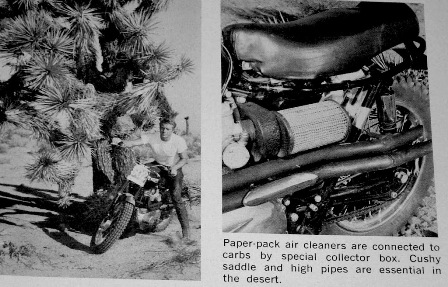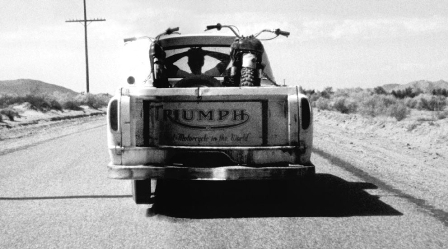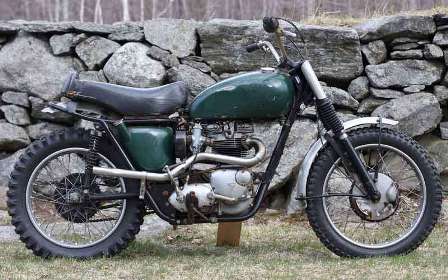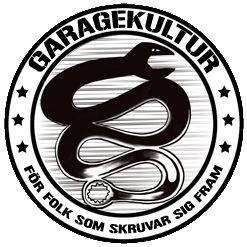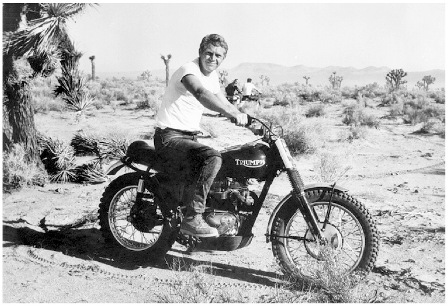
För länge, länge sedan. Långt innan motorartister slog volter inför TV-kameror och jagade sponsorkontrakt. Då fanns det motormän som moddade gatuhojar och körde ut i öknen på dem i Kalifornien. Steve McQueen var en av dem. Han hade en racingkarriär innan han blev skådis. Här är en artikel från Cycle World 1964 som beskriver hojen och alla modifieringar som han och Bud Eskins gjorde på den. Det är bara att läsa, skaffa sig en lämplig Triumph och börja bygga. För dig som vill jobba lite extra för att ha roligt i livet.
“IN McQUEEN’S SERVICE”
Winning desert races is what this machine was set up for. It is the mount of actor Steve McQueen, who recently won the novice class in a one-hour desert scrambles. The victory only proved what a close look at his Triumph Bonneville suggests: McQueen takes his motorcycling seriously.
It takes some modifications to wing the rough, dusty hare ‘n hounds, scrambles and enduros that are popular in the southwestern desert. McQueen’s machine was prepared in Bud Ekins’ Sherman Oaks, California shop. They started by replacing the stock wheel with a 1956 Triumph hub and 19″ wheel to reduce unsprung weight. The forks were fitted with sidecar springs and the rake increased slightly by altering the frame at the steering crown. The rear frame hoop was bent upward to accommodate a 4.00 x 18 Dunlop sports knobby, and to it were welded brackets for the Bates cross-country seat. The bars are by Flanders, with leather hand guards, and the throttle cables run over the tank, through alloy brackets to the twin 1 1/8″ Amal carburetors.
A Harlan skidplate protects the underside of the motor, the footpegs were braced, and the rear brake rod was increased to 5/16″ diameter and rerouted inside the frame and shock (where sagebrush can’t damege it). The oil tank was modified to increase its capacity and bring the filler out the side fom under the seat. It also serves as part of the mudguard, saving weight.
The engine is basically a stock Bonneville but the compression was lowered from 12 : 1 to 8 1/2 : 1 for reliability, and the sagebrush-snagging oil pressure indicator was converted to a pop-off relief valve with a return line back to the oil tank. McQueen runs Jomo TT cams and Lode RL47 Platinum tip plugs.
The important job of filtering all that dirt out of the desert air is handled by paper-pack air cleaners connected by a special collector box to the carbs. This box is finished in black wrinkle-finish paint while the tanks are dark green. The cross-over pipes are Ekins’ own design, and are left unplated for better heat dissipation. Perhaps if McQueen were riding this motorcycle in the movie, he would have made his “Great Escape.”
–Cycle World Magazine, June 1964
